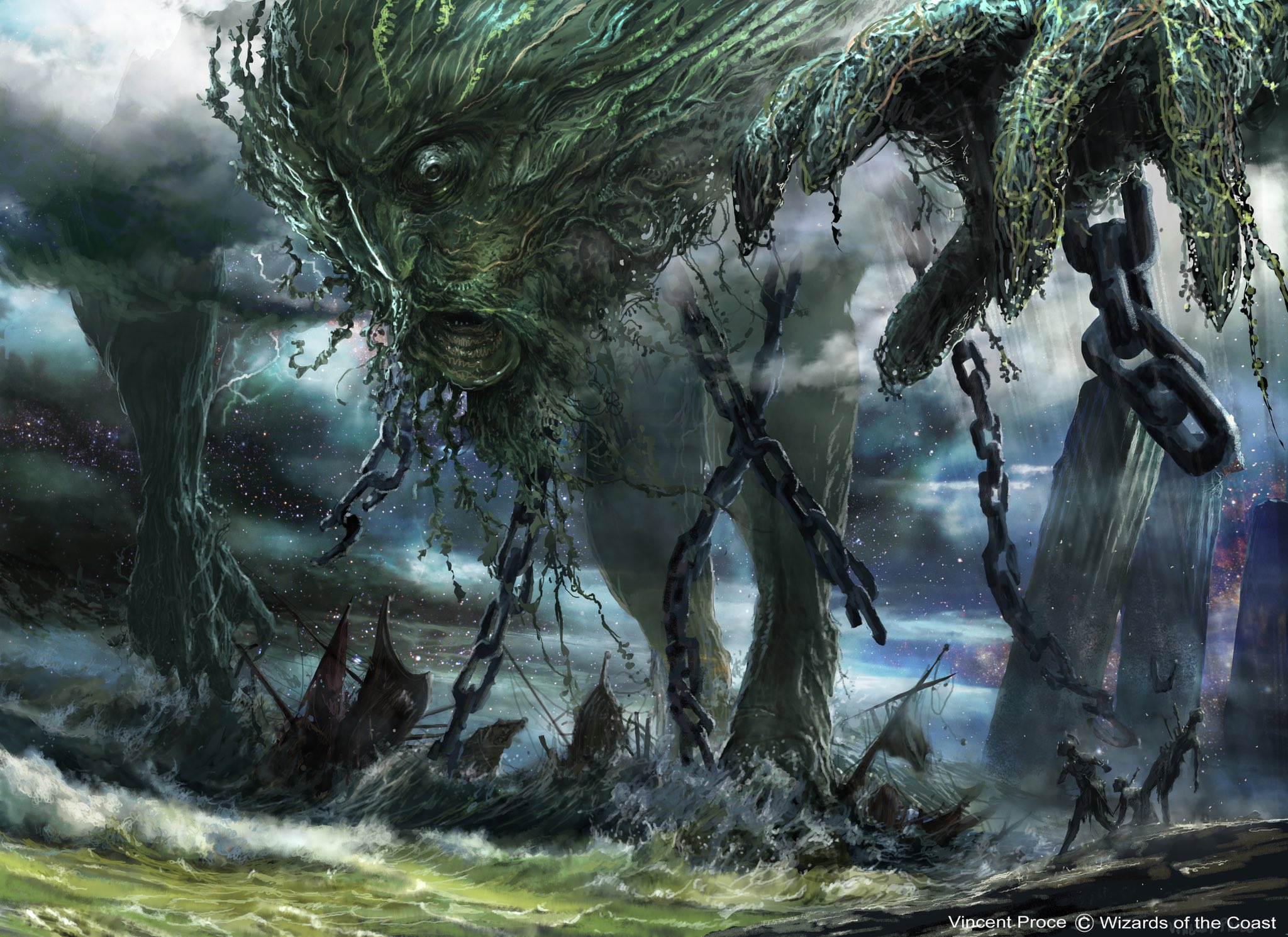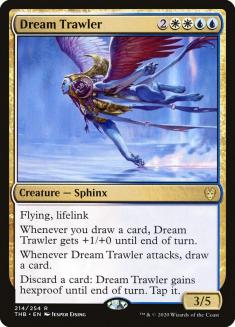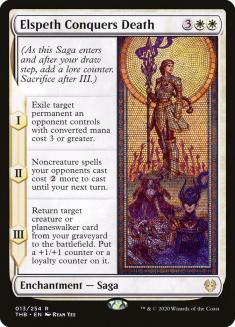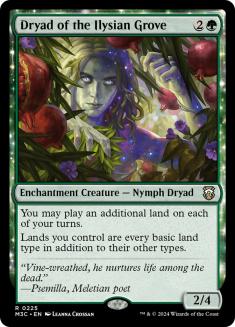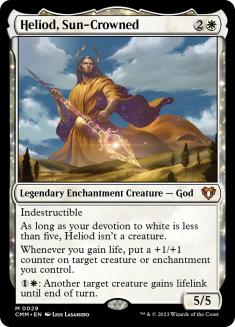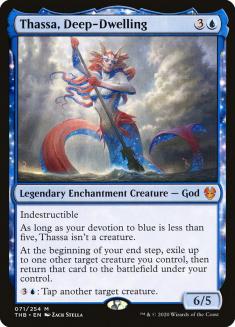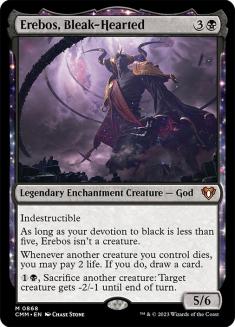Welcome to another edition of Fact or Fiction! Today, Sam Black, Shaheen Soorani, and Ari Lax are here to give their takes on five statements about Theros Beyond Death’s impact on Magic. Don’t forget to vote for the winner at the end!
1. Dream Trawler is the best win condition control decks have had since Elsepth, Sun’s Champion.
Sam Black: Fiction. Dream Trawler is great, and it’s a better Baneslayer than Baneslayer Angel, but it’s not as good as Teferi, Hero of Dominaria, and might not even be as good as Torrential Gearhulk or The Scarab God. It’s hard to kill and hard to race, but it doesn’t resist counterspells or sweepers and offers opposing control decks a reasonable amount of time to answer it.
It feels ridiculous to list all the virtues of Teferi, Hero of Dominaria as if everyone’s already forgotten, but as far as direct comparison, it costs less mana, untaps lands, and gives you an answer to problematic permanents. This requires dropping your shields much less than Dream Trawler, and the fact that you’re up a card even if your opponent answers it right away is an important distinction. I’m not trying to put Dream Trawler down in any way, but this just isn’t a realistic bar.
Shaheen Soorani: Fact. Fact. Fact. Before anyone hits me with that Teferi, Hero of Dominaria nostalgia, remember the era in which it was barely played. When it had great mana and removal, Esper Control was one of the kings of Standard. After a small rotation, there was fringe play in Esper Hero, but even the Bant Scapeshift decks turned their back on the Azorius planeswalker. Teferi is the best card control has had access to in many years, but it was not the best win condition.
Dream Trawler is, without a doubt in my mind, the best win condition control has received since Elspeth, Sun’s Champion. In terms of gameplay, finishing a match on time, defensive casting, offensive threat, protection, life gain, and card advantage, this Sphinx has it all. Once this card was released, I knew every control deck would have to drastically change in order to incorporate it. Unfortunately for us control enthusiasts, the secret is out. Deck builders will come prepared to deal with this hexproof monstrosity, which just means we must play four copies in our deck. That is a small sacrifice to make in order to conquer the world of Theros Beyond Death Standard.
Ari Lax: Fiction. First off, Elspeth, Sun’s Champion was a pretty mediocre control finisher. It wasn’t even the best control finisher any time a control deck was good in that format. Ugin, the Spirit Dragon; Dragonlord Ojutai; and Sphinx’s Revelation’s dominance over your opponent’s willpower were all more successful.
But, more importantly, we literally titled Bryan Gottlieb article as Dream Trawler Azorius Midrange yesterday. The deck plays four sweepers, so I think whether it’s midrange or tap out control is a debate, but the fact it isn’t clear and that Dream Trawler blurs lines the way Baneslayer Angel did makes this kinda rough to debate.
2. Elspeth Conquers Death is the best Saga of all time for Constructed play.
Sam Black: Fiction. The best Saga in Dominaria was History of Benalia. Elspeth Conquers Death is more comparable to The Eldest Reborn. The targeting on the first ability is better, although worse against hexproof threats, which was one of the important functions of The Eldest Reborn, but I think the second and third chapters are both worse than the corresponding chapters of The Eldest Reborn. The second chapter of Elspeth Conquers Death is somewhat held back by the fact that the opponent can use all of their mana efficiently without skipping a turn if they can cast creatures or cast spells on their turn before the chapter resolves and your following turn the turn after. The last ability is also weaker in general, as the option to take a card from their graveyard is much more important than the extra counter. I’ve frequently seen Elspeth Conquers Death function only as an expensive removal spell.
I’m not sure yet which Saga from Theros Beyond Death will end up being the strongest, but I don’t believe Elspeth Conquers Death will surpass History of Benalia, as those effects are admittedly hard to compare and function in completely different strategies. In Theros Beyond Death Standard. I also think there’s a chance that Elspeth Conquers Death will end up weaker than Kiora Bests the Sea God, Tymaret Calls the Dead, or maybe even The First Iroan Games.
Shaheen Soorani: Fact. They really knocked it out of the park with this one. I thought Ashiok, Nightmare Muse was going to be the five-drop replacement in Esper Hero (and similar control decks), but it turned out to be an enchantment removal spell instead. Exiling is a high priority these days and hitting any permanent makes it so much better than any other removal spell in Theros Beyond Death Standard. I had to really get my playtesting hands dirty to realize this is the best Saga of all time, hands down.
I have played quite a few expensive Sagas in my day; however, this one takes the cake in the versatility realm. Having a target is optional for the first ability, which immediately reminds me of The Eldest Reborn. That Saga is the chief competitor of Elspeth Conquers Death for the best of all time, but it is all in that first ability. The other two modes on each Saga is at about the same power level but exiling any permanent steals the crown from its predecessor, making Elspeth Conquers Death a staple for the foreseeable future.
Ari Lax: Fiction. History of Benalia put 24 copies in the Top 8 of Pro Tour Guilds of Ravnica. Andrew Elenbogen literally writes for this website because that card is so good.
Do you even play four copies of Elspeth Conquers Death? Is it even better than Tymaret Calls the Dead from the same set? Isn’t that card just graveyard History of Benalia?
3. Dryad of the Ilysian Grove will make Primeval Titan-based strategies too powerful in Modern.
Sam Black: Fiction. “Too powerful” is subjective, so I’m interpreting this as indicating that Dryad of the Ilysian Grove with Primeval Titan will necessitate a ban, which I don’t think will happen. There’s a small caveat here that I do think something implied in that shell might need to be banned. Specifically, I’ve already said that I think Field of the Dead might warrant a Modern ban eventually regardless of Dryad of the Ilysian Grove, so if Field of the Dead gets banned, I wouldn’t credit Dryad of the Ilysian Grove with that since it interacts minimally with Field of the Dead directly.
I do think there’s a very good chance that Dryad of the Ilsyian Grove and/or Primeval Titan will be involved in the best deck or even several of the best decks in Modern. Personally, if I were to play a Modern tournament right now, I would actually play Dryad of the Ilysian Grove with Valakut, but I wouldn’t play Primeval Titan.
Shaheen Soorani: Fiction. Since Amulet Titan is the best Primeval Titan deck by a decent stretch, I don’t see additional Azusa, Lost but Seeking copies doing much to push it over the edge. The deck is super-tight as is and I’m not sure how many more three-drops of that type can fit into the new builds. It is an extremely powerful card in decks that utilize Valakut, the Molten Pinnacle, but those decks are easily Tier 2 in comparison, even with this new Prismatic Omen.
If traditional Scapeshift decks get popular again, then Dryad of the Ilysian Grove could make a splash in Modern. The initial question is easily Fiction, because it will not make it too powerful for Modern. This creature, like Azusa, Lost but Seeking, allows for some very powerful starts; however, neither is at the point of breaking the format. I’m glad to see sweet cards like this printed, especially knowing that similar, but better, effects already exist in older formats. The last thing I want to see is more people cast that evil green Giant.
Ari Lax: Fiction. Urza’s Tower is still legal, and we have had Tron decks since 2012. If big mana decks were ever truly problematic, we would have seen those lands gone instead of Mycosynth Lattice, since it seems like Wizards of the Coast (WotC) is taking headshots at the old guard of the format.
Dryad of the Ilysian Grove and Field of the Dead represent unique inevitability at low cost, both in terms of both cards naturally fitting in your deck and low mental cost because you can build these sure kills without having to do Amulet Titan math. Big mana in Modern is only scary if it really starts breaking specific turn barriers. Cloudpost and Green Sun’s Zenith were responsible for some absolute nonsense at the start of the format. Summer Bloom was causing Turn 2 kills. Unless WotC is dying for a chance to take a shot at Amulet of Vigor, people will just play more Blood Moon and combo and beat Primeval Titan the same way they always have.
4. A Devotion deck will be a Tier 1 strategy in Theros Beyond Death Standard at some point.
Sam Black: Fact. I’m not sure what exactly Theros Beyond Death Standard looks like, but between Heliod-based white aggro; blue decks using Thassa, Deep-Dweller and/or Thassa’s Oracle; and black decks using Gray Merchant of Asphodel, this seems inevitable. Again, there’s some question as to what constitutes a “Devotion deck.” In this case I’d claim that an aggressive white deck with Heliod as the only instance of the devotion mechanic would count. In the extremely unlikely event that not one of these decks ever reaches Tier 1 before Ikoria: Lair of Behemoths is released, it seems virtually guaranteed that at least one such strategy will be good enough immediately after rotation.
Shaheen Soorani: Fact. I don’t think Devotion will be the best deck at the start of the new format, but it will easily be a Tier 1 deck in the future. In this new world of slower, midrange and control decks, Devotion can quickly rise to the top. Mono-Black Devotion is one of my favorites at the start of this new format, hitting these slower decks with inevitability. Gray Merchant of Asphodel joined forces with Bolas’s Citadel to make a powerful one-two punch and will be Tier 1 soon.
There are other Devotion strategies that I have seen implemented; however, I do not think they will rise to the top as Mono-Black Devotion will. The payoff cards aren’t as impressive and take a back seat to the established cards in each of the archetypes they’ve been added to. Mono-Black Devotion is a deck spawned from this set and provides massive synergy with enters-the-battlefield triggers, a powerful flying Demon that triggers them all again in Nightmare Shepherd, as well as Bolas’s Citadel, which allows for these cards to flow off the top of the library. The pieces are in place and this deck will be a major player in the competitive scene.
Ari Lax: Fact, Regardless Of Whether It Is True. Theros Beyond Death actually has more cards with devotion than original Theros did by a significant margin, and they are priced to move. The reworked Gods are actually a notch ahead of the previous versions, and about half of the Demigod cycle is priced for Standard play and costed to properly support their God. The final Throne of Eldraine format was fairly friendly to battlefield intensive setup strategies like Jund Sacrifice and the cards in Theros Beyond Death don’t seem to change that. Devotion has good odds.
And even if it fails, some deck is going to be named “This Color” Devotion. Classic Mono-Black Devotion played four cards with devotion and maybe some copies of Erebos, God of the Dead in the sideboard. If Gray Merchant of Asphodel didn’t exist, Thoughtseize / Pack Rat / Mutavault and black cards would have been good enough. And it would have been named Mono-Black Devotion, because that was the mechanic. It’s like Affinity, which takes the “martini vermouth” approach to the mechanic and plays two Thoughtcast in testing before cutting them.
5. The hype around Uro, Titan of Nature’s Wrath is overblown and unjustified.
Sam Black: Fiction. Uro is fantastic alone and plays with a wide variety of support strategies that further abuse it. The interaction with Cavalier of Thorns in particular is fantastic in Standard and I’m optimistic about it in Pioneer. In a completely different way, it pairs well with Collected Company, allowing you to split value between your hand and the battlefield, which mitigates many Company decks’ weakness to sweepers, particularly since it also offers a resilient threat that offers further card advantage. Uro is almost impossible to grind out if it’s supported by even minimal self-milling, and even against graveyard hate, it cycles away relatively productively.
It’s possible that it will take some time for it to find the proper home if games are largely played on a different axis, but even that’s unlikely, and the card is simply too strong not to shine in the near future.
Shaheen Soorani: Fact. I know we are all very sensitive on all things Simic, but it’s time to let the guard down for this innocent bystander. Uro isn’t going to fill the void left in the most powerful Standard guild by bannings and it will never be a dominate force. Nissa, Who Shakes the World and Hydroid Krasis still run the Simic streets, providing that necessary late-game punch the guild has been destroying formats with over the last year. Although the value and power of Uro is unquestionably strong, it doesn’t fit the mold of the powerful ramp deck.
Simic leans heavily on its two-mana accelerants, especially because both Growth Spiral and Paradise Druid are difficult to interact with. Uro has a similar effect that is hard to answer, but it being one more mana makes all the difference. The current ramp spells being utilized by Simic are better and it leaves no room in the yard for this new weapon. At ease, my fellow mages. This one will not have us light the banning torches.
Ari Lax: Fiction. You can be rightfully hyped about a card and have it end up a bit below expectation. You can also be rightfully hyped and have to wait a bit for the payoff.
Uro is a ramp spell, that’s also a threat, but that threat also gets immediate advantage, but it’s also graveyard recursive, but it’s also just graveyard active if you dredge it up. In one of the current best color pairs. That’s a lot of really big signs Uro is going to be a big deal.
It turns out getting five cards into your graveyard isn’t quite the all-in ramp plan, but I think this is more a case of first-try failures than long-term lack of potential. People put Uro into decks that are all permanents that sit around. For example, Uro is probably less of a friend of Arboreal Grazer than it looks at first.
I don’t quite know what the end shell is for Uro, but when it lives up to the hype in a month from now I won’t be shocked.

